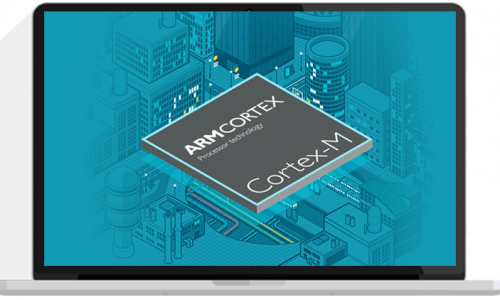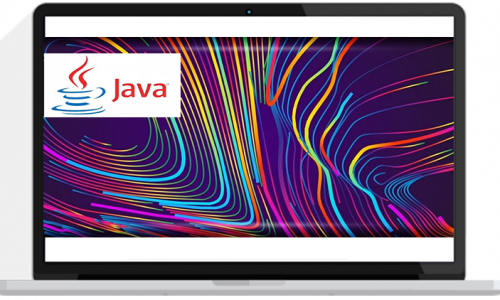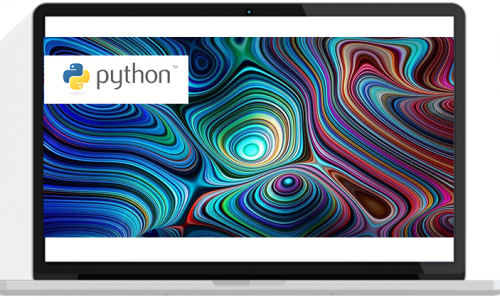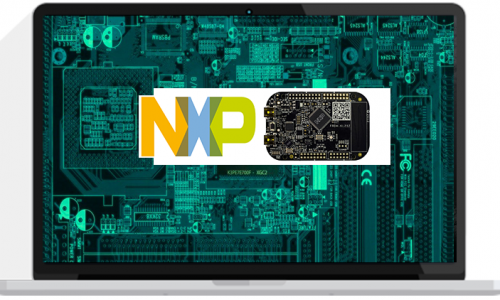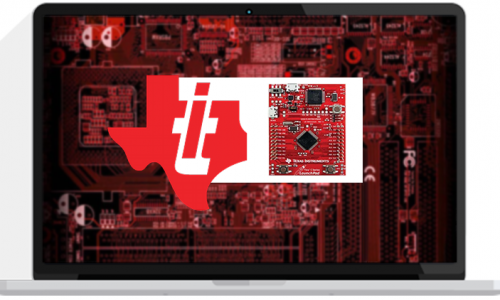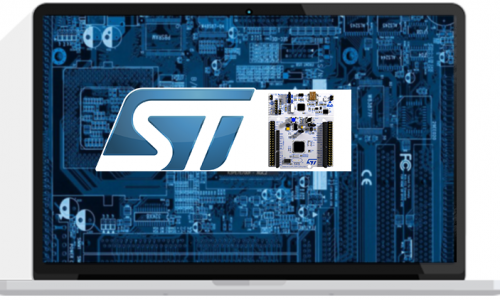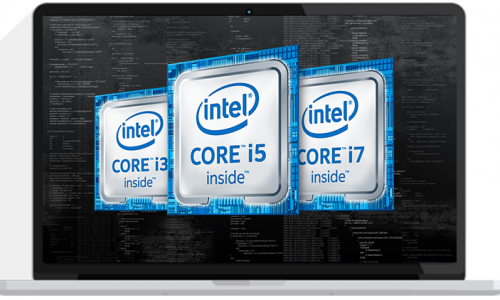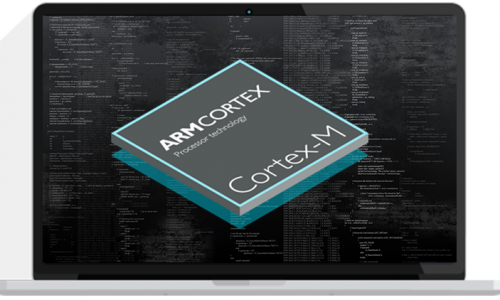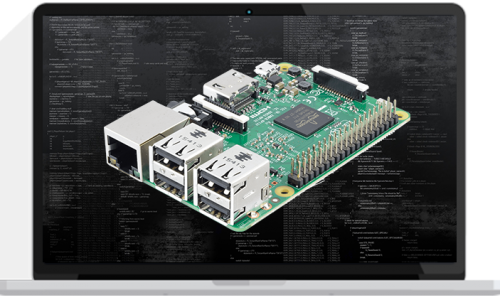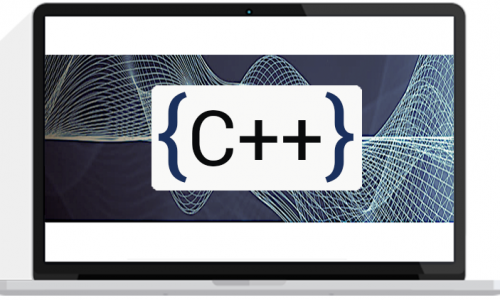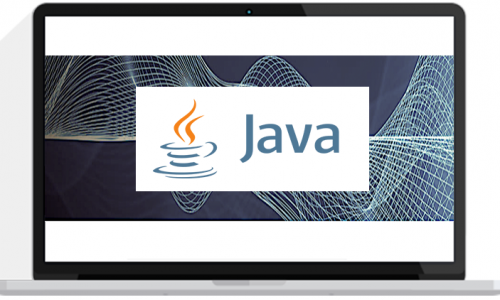Build Your Own RealTime OS (RTOS) From Ground Up™ on ARM
This course teaches you how to build a Real-Time Operating Systems through intensive practice and theory. It starts by getting you excited through an introduction to the internals of a Real-Time Kernel on ARM Processors, which you shall implement yourself in code.Then we move on to learn all there is about Real-Time Operating Systems, their various parts, how they work and then we finally build our own Real-Time Operating System exploring different scheduling algorithms and Inter-Thread communication tools.
At the end of this course you should be able to build your own Real-Time Operating System from scratch, give your own lecture on Real-Time Operating Systems, be able to build a Round-Robin Scheduler, be able to build a Periodic Scheduler, be able to calculate the CPU utilization of your RTOS, be able to build an OS Kernel etc. Please see the course curriculum section to find out all the amazing content awaiting you
ARM mbed OS From Ground Up™
With a practical approach, this course teaches you how develop embedded applications using the ARM mbed OS platform. The initial sections of this course provide a wide-ranging introduction to embedded systems, using the mbed and demonstrating how it can be applied to rapidly produce successful embedded designs. The latter sections introduce the concept of real-time operating systems and then go on to teach you how to build real-time embedded applications using the ARM mbed OS platform.
By the end of this course you should be able to master the ARM mbed OS platform.
FreeRTOS From Ground Up™ on ARM Processors
Build RealTime embedded applications with FreeRTOS. Practice on STM32 and TIVA C boards.
This course teaches you the foundations of real-time systems and how to build real-time applications using FreeRTOS ,one of the most popular real-time operating systems for embedded systems. The course gives a detailed overview of the characteristics of the FreeRTOS real-time kernel, provides a detailed tutorial on the APIs to implement the various features of FreeRTOS and then goes on to build about 50 real-time projects .
This course does not assume prior knowledge of real-time systems and application programming. By the end of this course you should be able to build your own multitask FreeRTOS real-time applications which use all the features of a modern real-time application (such as semaphores, mutexes, event flags, hooks, queues, mailboxes etc )and test their performance.You should also be able to : Calculate the CPU Utilization of an RTOS, Understand Rate Monotonic Schedulers,port FreeRTOS to any ARM processor,Understand Round-Robin Schedulers,Understand Weighted-Round-Robin Schedulers, Understand First Come First Served Schedulers,Understand the Internals of an RTOS kernel, Implement and explain popular scheduling algorithms and so much more. Please take a look at the full course curriculum.
Matlab Digital Image Processing From Ground Up™
With a programming based approach, this course is designed to give you a solid foundation in the most useful aspects of Image Processing in an engaging and easy to follow way. The goal of this course is to present practical techniques while avoiding obstacles of abstract mathematical theories. To achieve this goal, the image processing techniques are explained in plain language, not simply proven to be true through mathematical derivations.
Still keeping it simple, this course comes in different programming languages so that students can put the techniques to practice using a programming language of their choice. This version of the course uses the Matlab programming language.
By the end of the course you should be able to perform 2-D Discrete Convolution with images in matlab, perform Edge-Detection in matlab, perform Spatial Filtering in matlab, compute an Image Histogram and Equalize it in matlab, perform Gray Level Transformations, suppress noise in images, understand all about operators such as Laplacian, Sobel, Prewitt, Robinson, even give a lecture on image processing and more. Please take a look at the full course curriculum.
Java Image Processing From Ground Up™
With a programming based approach, this course is designed to give you a solid foundation in the most useful aspects of Image Processing in an engaging and easy to follow way. The goal of this course is to present practical techniques while avoiding obstacles of abstract mathematical theories. To achieve this goal, the image processing techniques are explained in plain language, not simply proven to be true through mathematical derivations.
Still keeping it simple, this course comes in different programming languages so that students can put the techniques to practice using a programming language of their choice. This version of the course uses the Java programming language.
By the end of the course you should be able to develop the 2-D Discrete Convolution algorithm in Java, develop Edge-Detection Algorithms in Java, develop Spatial Filtering Algorithms in Java, compute an Image Histogram and Equalize it in Java, to develop Gray Level Transformation Algorithms, suppress noise in images, understand all about operators such as Laplacian, Sobel, Prewitt, Robinson, even give a lecture on image processing and so much more. Please take a look at the full course curriculum
Python Digital Image Processing From Ground Up™
With a programming based approach, this course is designed to give you a solid foundation in the most useful aspects of Image Processing in an engaging and easy to follow way. The goal of this course is to present practical techniques while avoiding obstacles of abstract mathematical theories. To achieve this goal, the image processing techniques are explained in plain language, not simply proven to be true through mathematical derivations.
Still keeping it simple, this course comes in different programming languages so that students can put the techniques to practice using a programming language of their choice. This version of the course uses the Python programming language.
By the end of the course you should be able to perform 2-D Discrete Convolution with images in python, perform Edge-Detection in python , perform Spatial Filtering in python, compute an Image Histogram and Equalize it in python, perform Gray Level Transformations, suppress noise in images, understand all about operators such as Laplacian, Sobel, Prewitt, Robinson, even give a lecture on image processing and more. Please take a look at the full course curriculum.
{ C } Digital Image Processing From Ground Up™
With a programming based approach, this course is designed to give you a solid foundation in the most useful aspects of Image Processing in an engaging and easy to follow way. The goal of this course is to present practical techniques while avoiding obstacles of abstract mathematical theories. To achieve this goal, the image processing techniques are explained in plain language, not simply proven to be true through mathematical derivations.
Still keeping it simple, this course comes in different programming languages so that students can put the techniques to practice using a programming language of their choice. This version of the course uses the C programming language.
By the end of the course you should be able to develop the 2-D Discrete Convolution algorithm in C, develop Edge-Detection Algorithms in C, develop Spatial Filtering Algorithms in C, compute an Image Histogram and Equalize it in C, to develop Gray Level Transformation Algorithms, suppress noise in images, understand all about operators such as Laplacian, Sobel, Prewitt, Robinson, even give a lecture on image processing and so much more. Please take a look at the full course curriculum.
C ++Image Processing From Ground Up™
With a programming based approach, this course is designed to give you a solid foundation in the most useful aspects of Image Processing in an engaging and easy to follow way. The goal of this course is to present practical techniques while avoiding obstacles of abstract mathematical theories. To achieve this goal, the image processing techniques are explained in plain language, not simply proven to be true through mathematical derivations.
Still keeping it simple, this course comes in different programming languages so that students can put the techniques to practice using a programming language of their choice. This version of the course uses the C ++ programming language.
By the end of the course you should be able to develop the 2-D Discrete Convolution algorithm in C++, develop Edge-Detection Algorithms in C++, develop Spatial Filtering Algorithms in C++, compute an Image Histogram and Equalize it in C++, to develop Gray Level Transformation Algorithms, suppress noise in images, understand all about operators such as Laplacian, Sobel, Prewitt, Robinson, even give a lecture on image processing and so much more. Please take a look at the full course curriculum.
Embedded Systems Bare-Metal Programming ( NXP )
With a programming based approach, this course is designed to give you a solid foundation in bare-metal firmware development for ARM-based microcontrollers . The goal of this course is to teach you how to navigate the microntroller reference manual and datasheet to extract the right information to professionally build peripheral drivers and firmware. To achieve this goal, no libraries are used in this course, purely bare-metal embedded-c and register manipulations.
Still keeping it simple, this course comes in different ARM Cortex-M development boards so that students can put the techniques to practice using an ARM Cortex-M development board of their choice. This version of the course uses the Texas Instrument TM4C123 Tiva C Launchpad which which has an ARM Cortex-M4 microcontoller.
By the end of this course you will be able configure microcontroller peripherals like ADC, UART,PWM, GPIO, TIMER,I2C, SPI, etc. You will also master the ARM architecture and how to build professional embedded firmware for ARM processors.
With a programming based approach, this course is designed to give you a solid foundation in bare-metal firmware development for ARM-based microcontrollers . The goal of this course is to teach you how to navigate the microntroller reference manual and datasheet to extract the right information to professionally build peripheral drivers and firmware. To achieve this goal, no libraries are used in this course, purely bare-metal embedded-c and register manipulations.
Still keeping it simple, this course comes in different ARM Cortex-M development boards so that students can put the techniques to practice using an ARM Cortex-M development board of their choice. This version of the course uses the NXP FRDM-KL25Z which has an ARM Cortex-M0+ microcontoller.
By the end of this course you will be able configure microcontroller peripherals like ADC, UART,PWM, GPIO, TIMER,I2C, SPI, etc. You will also master the ARM architecture and how to build professional embedded firmware for ARM processors.
Bare Metal Embedded - C Programming (TM4C123)
With a programming based approach, this course is designed to give you a solid foundation in bare-metal firmware development for ARM-based microcontrollers . The goal of this course is to teach you how to navigate the microntroller reference manual and datasheet to extract the right information to professionally build peripheral drivers and firmware. To achieve this goal, no libraries are used in this course, purely bare-metal embedded-c and register manipulations.
Still keeping it simple, this course comes in different ARM Cortex-M development boards so that students can put the techniques to practice using an ARM Cortex-M development board of their choice. This version of the course uses the Texas Instrument TM4C123 Tiva C Launchpad which which has an ARM Cortex-M4 microcontoller.
By the end of this course you will be able configure microcontroller peripherals like ADC, UART,PWM, GPIO, TIMER,I2C, SPI, etc. You will also master the ARM architecture and how to build professional embedded firmware for ARM processors.
Embedded Systems Bare-Metal Programming Ground Up™ (STM32)
With a programming based approach, this course is designed to give you a solid foundation in bare-metal firmware development for ARM-based microcontrollers . The goal of this course is to teach you how to navigate the microntroller reference manual and datasheet to extract the right information to professionally build peripheral drivers and firmware. To achieve this goal, no libraries are used in this course, purely bare-metal embedded-c and register manipulations.
Still keeping it simple, this course comes in different ARM Cortex-M development boards so that students can put the techniques to practice using an ARM Cortex-M development board of their choice. This version of the course uses the STMicroelectronics STM32F4-NUCLEO which has an ARM Cortex-M4microcontoller.
By the end of this course you will be able configure microcontroller peripherals like ADC, UART,PWM, GPIO, TIMER,I2C, SPI, etc. You will also master the ARM architecture and how to build professional embedded firmware for ARM processors
x86 Assembly Language From Ground Up™
Covering x86 Processor History , Architecture and Practical Assembly Programming, this is the most comprehensive x86 assembly course online.
I’ll take you step-by-step through engaging and fun video tutorials and teach you everything you need to know to succeed as an x86 developer.
By the end of this course you will master the x86 Core Instruction Set, the x86 MMX Extension Instruction Set, the x86 Streaming SIMD Extension (SSE) Instruction Set and the x86 Advanced Vector Extension (AVX ) Instruction Set. You will be able to develop complex Image Processing Algorithms in x86 Assembly. You will be able to develop complex mathematical algorithms in x86 assembly .You will also be able to write robust programs that mix C++ and x86 Assembly files.
Furthermore, you will master every day things like navigating arrays, computing the statistical properties of an array such as computing the mean and standard deviation of each row and column. All of this written in assembly language. There is so much more. Please take a look at the full course curriculum.
Bluetooth Low Energy (BLE) From Ground Up™
This practical Bluetooth Low Energy (BLE) course will provide you with a solid in-depth training to be able to build BLE embedded devices and use them to communicate wither other smart devices and mobile phone app. This course aims to provide a solid practical understanding of Bluetooth Low Energy: the protocol, how data is organized, and the key design trade-offs that were made in the creation of the protocol.
By the end of this course you should be able to build your own BLE enabled embedded devices and give a lecture on the BLE protocol.
ARM Assembly Programming From Ground Up™
Welcome to the ARM Assembly Programming From Ground Up™ course.
Covering ARM Systems Design, Architecture and Practical Assembly Programming, this is the most comprehensive ARM assembly course online.
I’ll take you step-by-step through engaging and fun video tutorials and teach you everything you need to know to succeed as an ARM embedded developer.
By the end of this course you will master the ARM Instruction Set, the Thumb Instruction Set and the Thumb-2 Instruction Set. You will be able to create data structures such as FIFOs and LIFOs in Assembly. You will also be able to create Finite State Machines such as the Moore Machine and Mealy Machine. Furthermore you will design complex algorithms for performing Binary Search in assembly , and solving advance mathematical problems like the Taylor Series and the Bisection Algorithm . Finally you will be able to create hardware drivers to configure peripherals such GPIOs, ADCs, UARTs, TIMERs and SSRs.
REMEMBER : I have no doubt you will love this course. Also it comes with a FULL money back guarantee for 30 days! So put simply, you really have nothing to loose and everything to gain.
Sign up and lets start writing some low level code.
ARM Raspberry Pi Assembly Programming From Ground Up™
By the end of this course you will master the ARM Instruction Set, the Thumb Instruction Set and the Thumb-2 Instruction Set. You will be able to Create, Assemble, Link and Debug Assembly programs in the Raspberry Pi terminal. You will be able to Create and Debug Assembly programs using Codeblocks on Raspberry Pi. You will be able to create data structures such as FIFOs and LIFOs in Assembly. Furthermore you will design complex algorithms for performing Binary Search in assembly , and solving advance mathematical problems like the Taylor Series and the Bisection Algorithm . Finally you will be able to create hardware drivers to configure the Raspberry Pi peripherals in assembly.
DSP From Ground Up™ on ARM Processors
With a programming based approach, this course is designed to give you a solid foundation in the most useful aspects of Digital Signal Processing (DSP) in an engaging and easy to follow way. The goal of this course is to present practical techniques while avoiding obstacles of abstract mathematical theories. To achieve this goal, the DSP techniques are explained in plain language, not simply proven to be true through mathematical derivations.
Still keeping it simple, this course comes in different programming languages and hardware architectures so that students can put the techniques to practice using a programming language or hardware architecture of their choice. This version of the course focuses on developing DSP algorithms for ARM microcontrollers leveraging the microcontrollers features such SIMD, MAC, Floating Point Unit (FPU) and the ARM CMSIS-DSP Library.
By the end of this course you should be able develop efficient DSP algorithms using MAC and SIMD instructions , develop RealTime Digital Signal Processing firmware , master the CMSIS-DSP Library, develop and test the Convolution Kernel algorithm on ARM processors, develop and test the Discrete Fourier Transform (DFT) algorithm on ARM processors, develop and test the Inverse Discrete Fourier Transform (IDFT) algorithm on ARM processors, design and develop Finite Impulse Response (FIR) filters on ARM processors, design and develop Infinite Impulse Response (IIR) filters on ARM processors, develop Windowed-Sinc filters on ARM procesors, build Modified Sallen-Key filters, build Bessel, Chebyshev and Butterworth filters, develop the Fast Fourier Transform (FFT) algorithm on arduino, even give a lecture on DSP and so much more
C++ Digital Signal Processing (DSP) From Ground Up™
With a programming based approach, this course is designed to give you a solid foundation in the most useful aspects of Digital Signal Processing (DSP) in an engaging and easy to follow way. The goal of this course is to present practical techniques while avoiding obstacles of abstract mathematical theories. To achieve this goal, the DSP techniques are explained in plain language and computer code, not simply proven to be true through mathematical derivations.
Still keeping it simple, this course comes in different programming languages and hardware architectures so that students can put the techniques to practice using a programming language or hardware architecture of their choice. This version of the course uses the C++ programming language. With each dsp topic we shall develop two versions of the same algorithm. One version shall be focused on code readable and the other version shall focus on robustness and execution speed- we shall employ programming techniques such loop unrolling and Multiply- Accumulate (MAC) to accomplish this.
By the end of this course you should be able develop the Convolution Kernel algorithm in C++, develop the Discrete Fourier Transform (DFT) algorithm in C++, develop the Inverse Discrete Fourier Transform (IDFT) algorithm in C++, design and develop Finite Impulse Response (FIR) filters in C++, design and develop Infinite Impulse Response (IIR) filters in C++, develop Windowed-Sinc filters in C++, build Modified Sallen-Key filters, build Bessel, Chebyshev and Butterworth filters, develop the Fast Fourier Transform (FFT) algorithm in C++, even give a lecture on DSP and so much more.
Java Digital Signal Processing (DSP) From Ground Up™
Build a Complete DSP Library for your Signal Processing Projects in Java
Digital Signal Processing (DSP) From Ground Up™ in Python
Practical DSP in Python : Over 70 examples, FFT,Filter Design, IIR,FIR, Window Filters,Convolution,Linear Systems etc.
By the end of this course you should be able develop the Convolution Kernel algorithm in python, develop 17 different types of window filters in python, develop the Discrete Fourier Transform (DFT) algorithm in python, develop the Inverse Discrete Fourier Transform (IDFT) algorithm in pyhton, design and develop Finite Impulse Response (FIR) filters in python, design and develop Infinite Impulse Response (IIR) filters in python, develop Type I Chebyshev filters in python, develop Type II Chebyshev filters in python, perform spectral analysis on ECG signals in python, develop Butterworth filters in python, develop Match filters in python,simulate Linear Time Invariant (LTI) Systems in python, even give a lecture on DSP and so much more.
